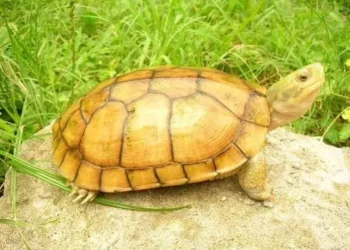Tortoises are unique and fascinating reptiles, cherished for their slow movements, long lifespan, and often docile nature. Pet owners frequently ask questions about their care, diet, and specific needs, as tortoises can be quite different from other common pets like dogs, cats, or birds. One of the most frequent inquiries from tortoise owners is whether tortoises can subsist entirely on lettuce. While lettuce is a popular and easily accessible food for tortoise owners, the short answer is: No, a tortoise cannot live solely on lettuce.
However, the reasons why lettuce alone is not sufficient are nuanced, and understanding the dietary needs of tortoises is essential to ensuring their long-term health and well-being. In this article, we will explore the natural diet of tortoises, the role that lettuce can play, and the consequences of an unbalanced diet. We’ll also provide guidance on how to create a balanced and nutritious diet for your pet tortoise.
Understanding Tortoise Physiology and Dietary Requirements
Tortoise Anatomy and Digestive System
Before delving into specific food choices, it is important to understand the basic anatomy and digestive system of a tortoise. Tortoises are herbivorous reptiles, which means that they primarily consume plant matter. Their digestive systems are adapted to breaking down fibrous plant materials, especially those that are found in their native environments. Tortoises rely on fermentation in their large intestines to help break down tough plant fibers, a process facilitated by specialized bacteria.
Tortoises are cold-blooded, meaning their metabolic rates depend on external temperatures. This plays a role in their energy requirements, digestion speed, and overall health. Because their digestive systems are slow and methodical, providing them with nutrient-rich, fibrous, and varied food is crucial to support both their energy levels and the long-term health of their digestive system.
Natural Habitat and Diet in the Wild
Tortoises inhabit a variety of ecosystems around the world, from dry deserts to tropical forests. Their natural diets are diverse and vary depending on their specific habitat, but there are commonalities among most tortoise species. In the wild, tortoises primarily eat grasses, weeds, flowers, leaves, and sometimes fruit. They have evolved to consume a wide variety of vegetation, most of which is fibrous and nutrient-dense.
For example, species like the Sulcata tortoise (native to the arid regions of Africa) primarily eat grasses and desert plants, while the Red-Footed tortoise (native to South American rainforests) eats a mix of vegetation and some fruit. The diet of a wild tortoise is naturally balanced and provides essential nutrients like calcium, fiber, and trace vitamins.
Key Nutrients Tortoises Need
A healthy diet for a tortoise must be rich in:
Fiber: Tortoises are built to consume a fiber-heavy diet. Fiber is important for maintaining a healthy gut and encouraging proper digestion. Grasses, hay, and leafy greens are excellent sources of fiber.
Calcium: Tortoises require a significant amount of calcium to maintain their shells and bones. Without enough calcium, they are at risk of developing metabolic bone disease, a debilitating condition that can lead to deformities, fractures, and death.
Vitamins: Tortoises need various vitamins to support their immune system, skin health, and vision. For instance, Vitamin A is essential for proper eye and respiratory health, while Vitamin D3 is necessary for calcium absorption (especially when combined with appropriate UV light exposure).
Protein: While tortoises are primarily herbivores, they do require small amounts of protein, typically found in leafy greens and specific types of vegetation. However, too much protein (especially animal-based protein) can be harmful and lead to health issues like kidney damage and pyramiding of the shell.
Water: Although tortoises may get some hydration from their food, they also need access to fresh water at all times. Dehydration can quickly lead to serious health problems, particularly for species from arid environments.
The Role of Lettuce in a Tortoise’s Diet
Now that we understand the dietary needs of tortoises, let’s address the primary question: Can a tortoise live on lettuce alone? Lettuce, while hydrating and appealing to many tortoises, lacks the essential nutrients required for long-term health. Feeding a tortoise only lettuce can lead to serious nutritional deficiencies. Let’s explore why.
Nutritional Profile of Lettuce
Lettuce, especially iceberg lettuce, is made up of approximately 95% water. While it can help with hydration, it provides very little in the way of vitamins, minerals, or fiber, all of which are essential for a tortoise’s well-being. Even more nutrient-dense lettuce varieties, such as romaine, still fall short when it comes to providing a complete diet for tortoises.
Iceberg Lettuce: This is the most common type of lettuce found in grocery stores, but it is the least nutritious. It is low in fiber, calcium, and vitamins. Essentially, it is mostly water with very little nutritional value.
Romaine Lettuce: While romaine contains more nutrients than iceberg lettuce, it still is not enough to meet a tortoise’s nutritional needs. Romaine has some fiber, vitamins A and K, and a small amount of calcium, but it is not sufficient as a primary food source.
Leaf Lettuce (Green and Red): Leaf lettuces are a better option than iceberg lettuce, but like romaine, they lack the fiber and calcium tortoises require.
Lettuce and Nutritional Deficiencies
Relying on lettuce as the primary food for your tortoise can lead to various health problems due to its poor nutritional profile. Some of the key issues that arise from feeding a tortoise an imbalanced diet include:
Calcium Deficiency and Metabolic Bone Disease (MBD): Without sufficient calcium in their diet, tortoises are at high risk of developing MBD. Lettuce contains very little calcium, and over time, a tortoise that eats predominantly lettuce may develop soft, deformed shells, brittle bones, and other skeletal issues.
Vitamin Deficiency: Lettuce lacks adequate amounts of essential vitamins, particularly Vitamin A and D3. A deficiency in Vitamin A can lead to eye and respiratory infections, while a lack of Vitamin D3 can further exacerbate calcium absorption issues, compounding the risk of metabolic bone disease.
Poor Digestion: Tortoises need fibrous foods to keep their digestive systems functioning properly. Lettuce is low in fiber, and long-term feeding of a low-fiber diet can lead to digestive stasis (where the digestive system slows down or stops), impactions, or other gastrointestinal issues.
Obesity and Lethargy: Lettuce contains very few calories and nutrients, and as a result, a tortoise that eats primarily lettuce may become lethargic and malnourished over time. In some cases, this can lead to obesity if the tortoise compensates by overeating in an attempt to meet its nutritional needs.
The Importance of a Balanced Diet for Tortoises
While lettuce should not be the primary component of a tortoise’s diet, it can still be fed in moderation, especially as a treat or to supplement a more balanced meal. A varied and nutritious diet is essential for a tortoise’s health, and there are several key components that should be included in their diet to meet their nutritional requirements.
See Also: Aldabra vs Galapagos Tortoises: What Is the Difference?
Leafy Greens and Vegetables
Leafy greens and vegetables should make up the bulk of a tortoise’s diet. These foods are rich in fiber, calcium, vitamins, and other essential nutrients. Some good options include:
- Kale
- Dandelion greens
- Collard greens
- Mustard greens
- Endive
- Turnip greens
- Escarole
These vegetables provide the fiber, vitamins, and minerals tortoises need, particularly calcium and Vitamin A.
Fibrous Plants
In addition to leafy greens, offering fibrous plants like grasses and weeds is important for a tortoise’s digestive health. Options such as timothy hay, Bermuda grass, and clover are excellent sources of fiber that more closely mimic the diet of wild tortoises.
Fruits (Occasionally)
While fruits should not make up a large portion of a tortoise’s diet, they can be offered in moderation, particularly to species like the Red-Footed tortoise that naturally eat fruits in the wild. Apples, berries, and melons are examples of safe fruits, but they should be offered sparingly due to their high sugar content.
Calcium Supplements
To ensure a tortoise receives enough calcium, it is often necessary to provide calcium supplements, particularly if their diet does not include enough calcium-rich foods. A powdered calcium supplement can be sprinkled on food a few times a week to help prevent deficiencies.
Hydration
While tortoises get some of their hydration from their food, particularly water-rich foods like lettuce and fruits, they should always have access to fresh water. In addition to providing a water dish, soaking your tortoise in shallow water once or twice a week can help with hydration and keeping their skin and shell healthy.
Conclusion
In conclusion, a tortoise cannot live on lettuce alone. Lettuce, particularly iceberg lettuce, lacks the essential nutrients that tortoises need to thrive. While romaine and other types of lettuce can be included as part of a varied diet, they should not be the primary source of nutrition. Instead, tortoises require a balanced diet rich in fibrous greens, calcium, and vitamins to maintain their health.
Ensuring a tortoise’s diet mirrors the diverse, nutrient-dense foods they would encounter in the wild is key to their longevity and well-being. With the proper care, including a well-rounded diet and attention to their specific species’ needs, a tortoise can live a long and healthy life, far beyond what they could achieve on lettuce alone.
Related Topics:

























